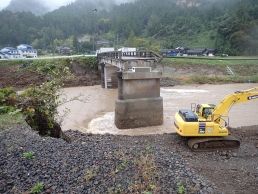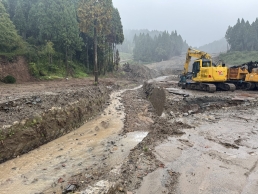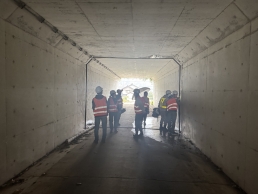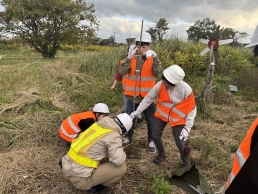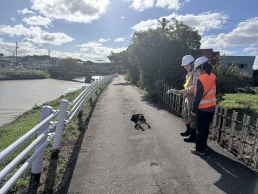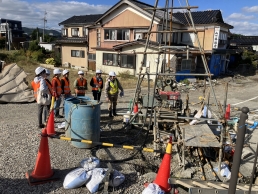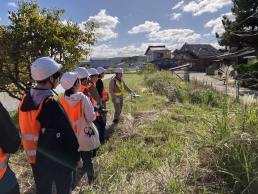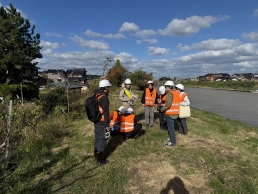2週連続で能登半島地震調査に行きました(10/20)。今回は学部3年生向けの少人数形式の授業(少人数セミナー)の一環としての調査で、教員・研究員・学生の9人で現地入りしました(2泊3日)。学生は事前に地盤災害の調査対象を決め、Webで可能な限りの情報を収集し、現地調査時の着目点を決めてから現地に向かいました。今回、3年生が着目したのが液状化による河川堤防の沈下、俗称「山津波」が生じた斜面崩壊、液状化・再液状化が生じた地盤、補強土擁壁の被災・無被災事例でした。現地では、自治体の許可を得て地盤調査(簡易動的コーン貫入試験)も行いました。東京に戻り、採取した土に対する物理試験等を行い、今回の地盤災害に対する理解を深め、今後の国土の災害レジリエンスについて議論します、防災教育を継続していきます。
Continuing from the previous week, we went to the Noto Peninsula. This time, the survey was part of a small-group class for third-year undergraduate students.
The third-year students decided survey targets in advance, collected as much information as possible on the web, and decided what they would focus on during the field survey. This time, the students focused on settlement of river embankments caused by ground liquefaction, slope failure (so-called ‘mountain tsunami’), liquefaction and re-liquefaction of the ground, and damaged or undamaged cases of reinforced soil retaining structures. On site, ground investigations (portable dynamic cone penetration test) were also carried out under the permission of the local governments. After returning to Tokyo, we will conduct geophysical tests on the collected soil, etc. to deepen their understanding of this ground disaster and discuss future disaster resilience of our country.
